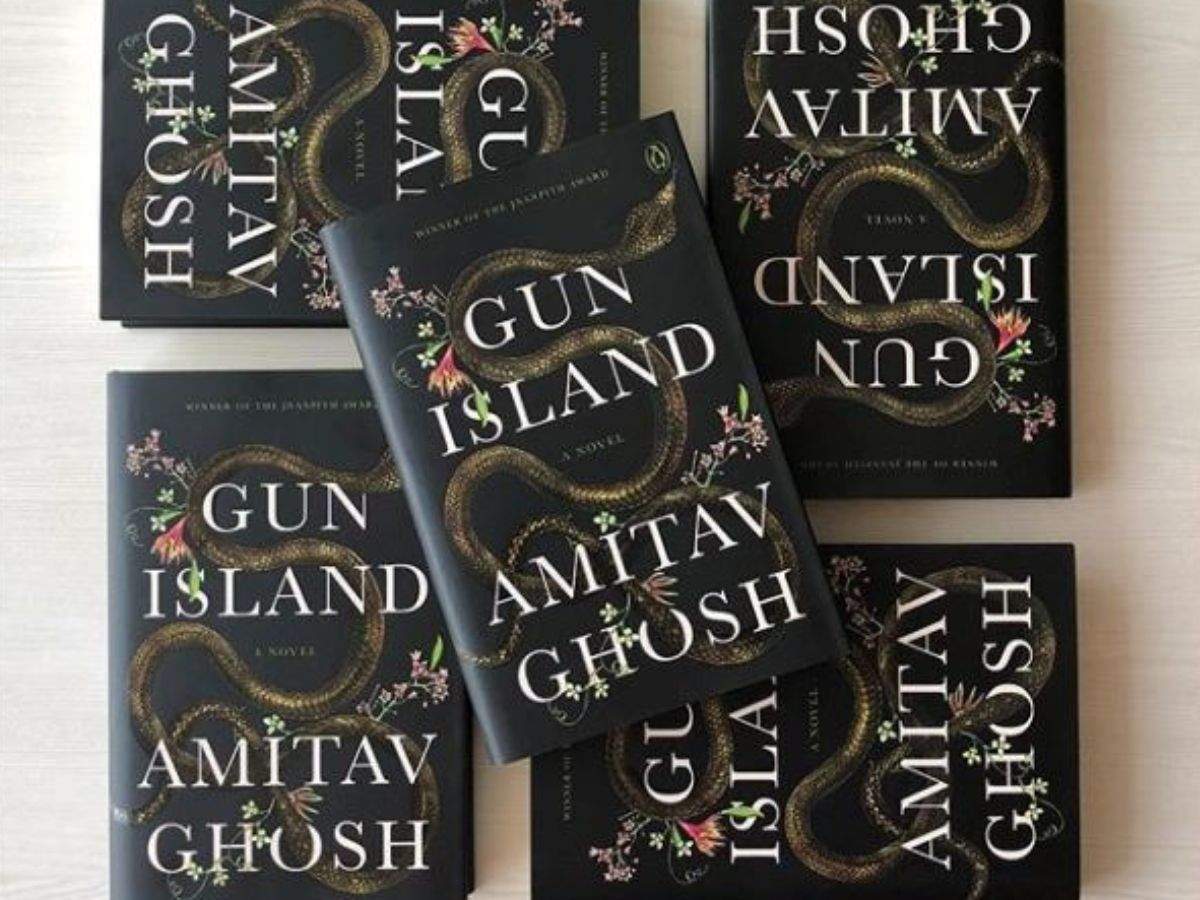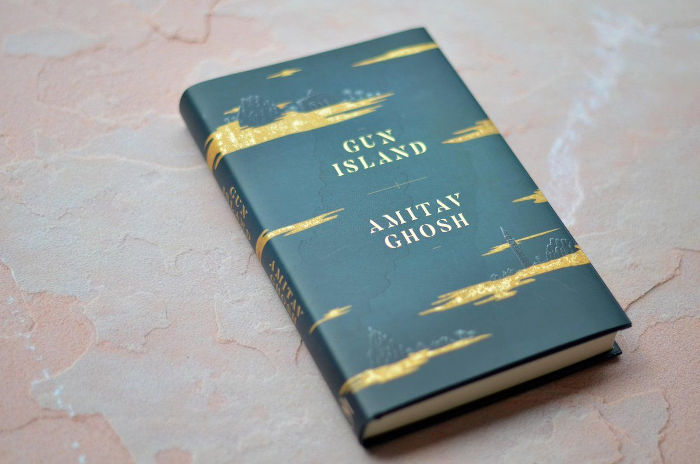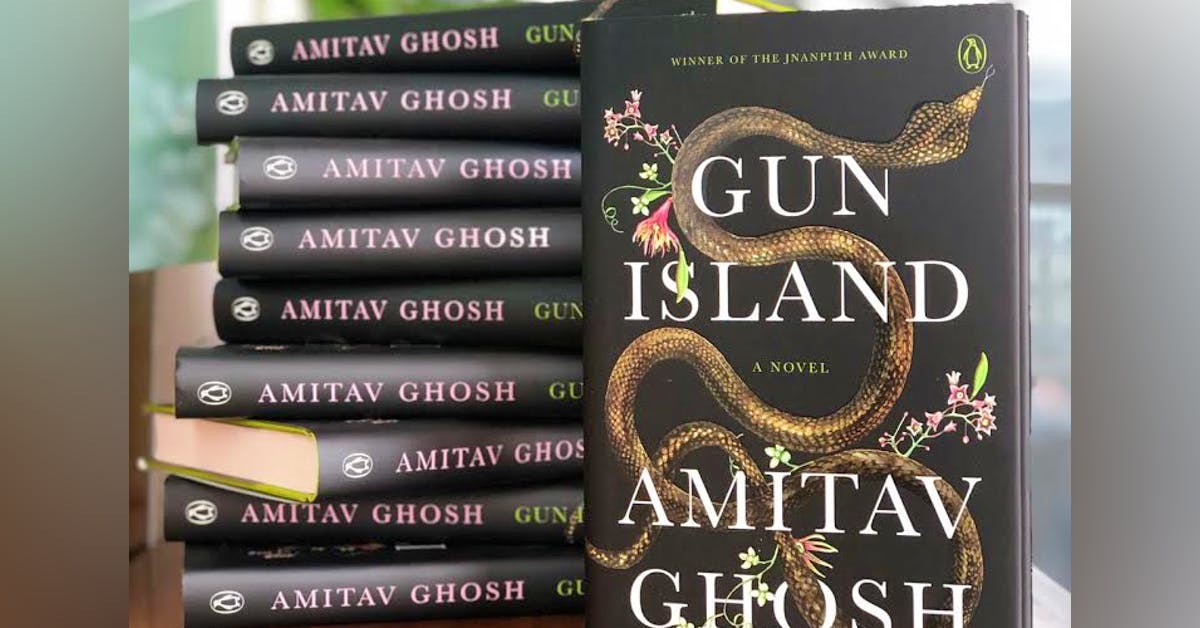The novel Gun Island, by acclaimed author Amitav Ghosh, bases itself on the Bengali folklore of Manasa Devi, the Goddess of the serpents, and weaves a fascinating narrative about migration and climate crisis. The shrine built in her reverence, which has the possibility of being a historical monument, hangs by a thread as the sea gradually proceeds to engulf the Sundarbans. Manasa Devi manifests herself in various forms of nature like snakes, water, birds, spiders, etc., as Pushpa.R.Menon cites in her essay ‘Ecofeminism In The Myth Of Manasa Devi In Amitav Ghosh’s Gun Island‘. Apart from the changing landscape of the Sundarbans, this compelling read also gives us a glimpse of climate change in Venice.
Dinanath “Deen” Datta, the protagonist of the narrative embarks on a journey to uncover the legend of Bonduki Sadagar, a gun merchant. A PhD. holder in Bengali Folklore, Deen visits the shrine of the Bonduki Sagar deep inside the Sunderbans as part of his work, and this changes his life. He encounters a snake, and several bewildering ciphers and symbols on the walls of the shrine, as his destiny and connection to the place unfold in slow, emphatic episodes.
A close look at the text reveals a deep connection between mythology and the environment that becomes the core of this fictional work. Gun Island by Amitav Ghosh digs up the interdisciplinary nature of literature as he intertwines it with the contemporary world’s climate crisis issues.
A work of fiction cannot be dismissed for its “imaginative elements” or disregarded as a guilty pleasure because fiction can provide a resistive stance or a perspective that is often overlooked by us while engaging with a crucial issue. In his previous work, The Great Derangement: Climate Change and the Unthinkable, Amitav Ghosh engaged in a dialogue with writers and artists about their ignorance towards addressing climate change in their creative works.
Therefore, it is crucial to note that amidst the supernatural and uncanny happenings of the protagonist Deen, Amitav Ghosh has foregrounded the impacts of climate change on the Sundarbans in this novel.

Mythology, fiction, and environmentalism
Author Pramod.K.Nayar mentions in his book ‘Contemporary Literary and Cultural Theory‘, how ecofeminism argues that nature and women are oppressed due to society’s patriarchal norms and beliefs. As women’s primary tasks are closely associated with nature, the basic assumption with which ecofeminism puts forward its theories is that men dominate and exploit both nature and women. After all, it is not uncommon to hear phrases like “mother earth”.
It is also interesting to notice how mythology becomes a powerful tool to deconstruct the traditional notions of time and space in the novel. The Gun Merchant’s tale becomes a reference point to study the Sundarbans. Through mythology, we get a glimpse of the Sundarbans during the Bhola cyclone during the 1970s. Once again brought up by Nilima to Deen, the plot then addresses the rising sea levels of the Sundarbans in the present times
American environmental activist Leah Thomas says, “The exploration of the feminine in connection with nature dates back centuries to early philosophical, spiritual, or religious contexts and creation theories”. In her Teen Vogue article about ecofeminism, she talks about how different cultures have their earth goddesses.
Manasa Devi’s frequent appearances in multiple forms of nature like snakes, spiders, water, etc., in Gun Island brings out this specific character of nature. Deen’s horrific and scary encounters with these species clearly show nature’s dangerous side and foreshadow the perils of climate change. Deen’s conversation with Nilima invokes discussion on the importance of regional folklore and its role in discovering and reshaping the history of one’s land.
In Gun Island, two parallel narratives run simultaneously; the Gun Merchant’s tale and Deen’s adventure of deciphering the merchant’s tale. The mythological basis given to the climate crisis in the plot binds the story to the ecological and political consequences of the impending loss of a local cultural site and, thereby, the loss of a legend upon which the livelihood of the Sunderbans villagers depends.
Also read: Literature And Environment: The Importance Of Ecofeminist Fiction In Environmental Protection

On the other hand, Nilima is a strong-willed character with a dramatic past. She established a women’s group called the Badabon trust, which then becomes one of India’s most reputed, charitable organisations, in the plot. Her journal ‘Cyclone Relief Accounts, 1970’, holds a dated entry of her experience during the Bhola cyclone in Sundarbans.
When Horen Naskar (a fisherman) and she venture out to distribute emergency supplies to the Sunderbans dwellers during the cyclone, they are surprised to come across a village where the inhabitants are uninjured. The miracle is owed to the snake goddess Manasa Devi.
The relentless pursuit of the Gun Merchant by Manasa Devi in Gun Island alludes to the capitalist, patriarchal institutions responsible for the destruction of the environment. Nilima’s demand for affirmative action goes unheard by the Archaeological Survey of India and Piya’s close observation of the rise in sea level suggests the dangerous fates of dolphins, “As sea level rose, and the flow of freshwater diminished, saltwater had begun to intrude deeper upstream making certain stretches too saline for the dolphins.”
In the present times in the plot, when Nilima calls Deen to meet her to discuss the potentiality of the Gun Merchant’s shrine being a historical monument, we see resistance working at an individual level. The Chipko movement in India, like several other environmental movements in the world, is an eco-feminist movement.
Author and academic Lee Quinby terms these movements “resistive politics” that foreground the relationship between nature and women, and shows how resistance operates at the micropolitical level. Nilima’s character arc in the novel is built on these lines, where we see the impact individual will and efforts can have on the course of a larger movement, as a whole.
It is also interesting to notice how mythology becomes a powerful tool to deconstruct the traditional notions of time and space in the novel. The Gun Merchant’s tale becomes a reference point to study the Sundarbans. Through mythology, we get a glimpse of the Sundarbans during the Bhola cyclone during the 1970s. Once again brought up by Nilima to Deen, the plot then addresses the rising sea levels of the Sundarbans in the present times.

The relentless pursuit of the Gun Merchant by Manasa Devi in Gun Island alludes to the capitalist, patriarchal institutions responsible for the destruction of the environment. Nilima’s demand for affirmative action goes unheard by the Archaeological Survey of India and Piya’s close observation of the rise in sea level suggests the dangerous fates of dolphins, “As sea level rose, and the flow of freshwater diminished, saltwater had begun to intrude deeper upstream making certain stretches too saline for the dolphins.”
To fight and address climate change, addressing the multiple levels of intersectional oppression is necessary. Gun Island provides various instances that underline the consequences of climate change in the Sundarbans and Venice, where the protagonist lives. As much as non-fictional works, documentaries, social media and news enlighten us with climate change’s imminent harmful implications, fiction widens the scope of the discourse by providing an intersectional framework to understand structural and systemic exploitation through emotional connections and personal journeys.
Also read: Gynocriticism: A Female Framework For The Analysis Of Women’s Literature
Rhea Choudhury is currently pursuing an MA in English and Cultural Studies from Christ University, Bangalore. She loves to explore food and watch recipe reels. Her area of interest lies in the intersection of Feminism and Fat studies, and she likes to talk with her friends about diversity issues.
Featured Image Source: LBB




